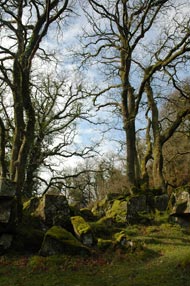The AirKife can be used to enhance the beneficial effects of mulch applications. Where the surface soil has become particularly compacted and the soil pore structure has been completely destroyed, it is possible to break-up this impermeable layer before spreading the organic mulch. A technique called vertical mulching can also be used, where holes as deep as a meter or more can be blown into the soil layers around the tree roots. This enables the introduction of valuable organic matter to the deeper soil layers, where it can be incorporated by soil micro-organisms to improve soil structure. The increased soil surface moisture level and more constant temperatures encouraged by organic mulches dramatically improve the environment for soil life. The mulch protects the surface soil crust from erosion by heavy rain and reduces the harmful effects of compaction. This allows the development of a good crumb structure as the soil mixes with the decaying organic matter within the lower layers of mulch. Decay fungi and bacteria release nitrogen (N) as they break down the mulch and earthworms are encouraged to this active decomposition layer. The worms help incorporate the organic matter into the soil and as they burrow though the soil they also create channels allowing water to drain away and improve soil aeration. A good layer of mulch on the surface of a thick clay soil will soon help break up the heavy structure and allow better root penetration and improve drainage. The additional organic matter added to a dry sandy soil will help retain water near the surface and reduce the loss of valuable nutrients through leaching. Read more about how the AirKnife works an idea of where it can be used: what is the AirKnife, construction sites, pipeline trenching, tree health investigations and our tree root research. |
 |
| Website by Digital Detail | Site requirements: Adobe Acrobat, Internet Explorer, Mozilla Firefox |